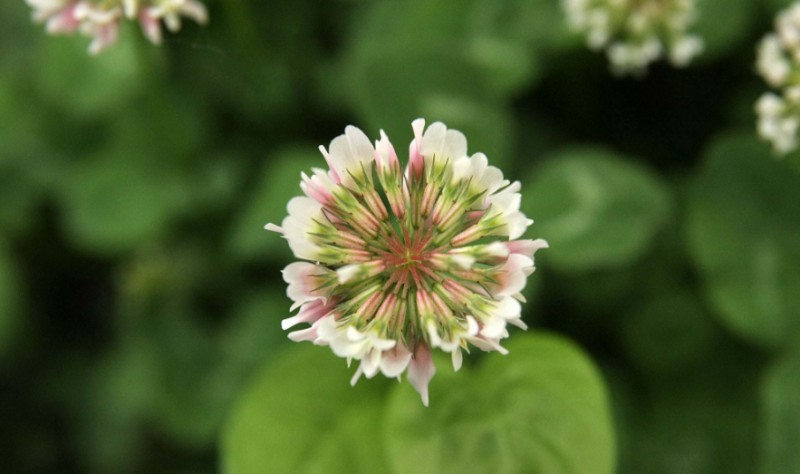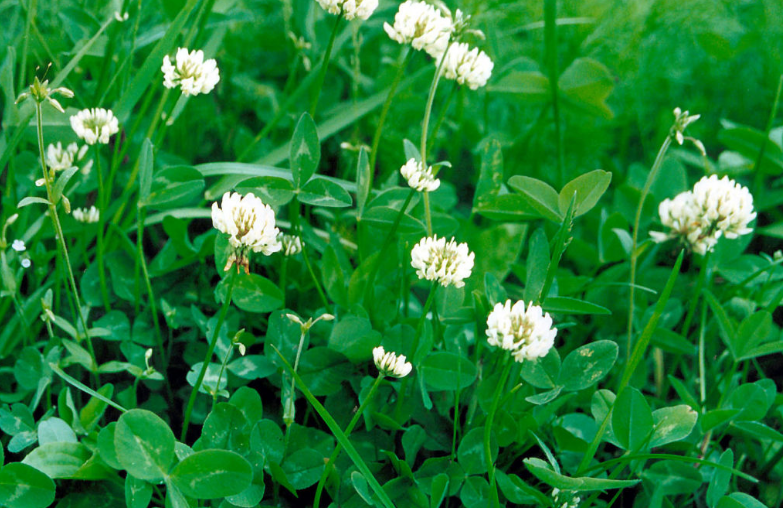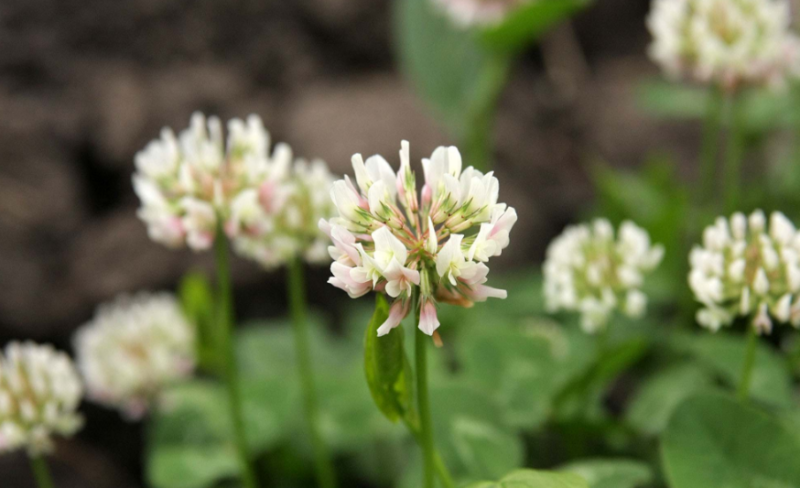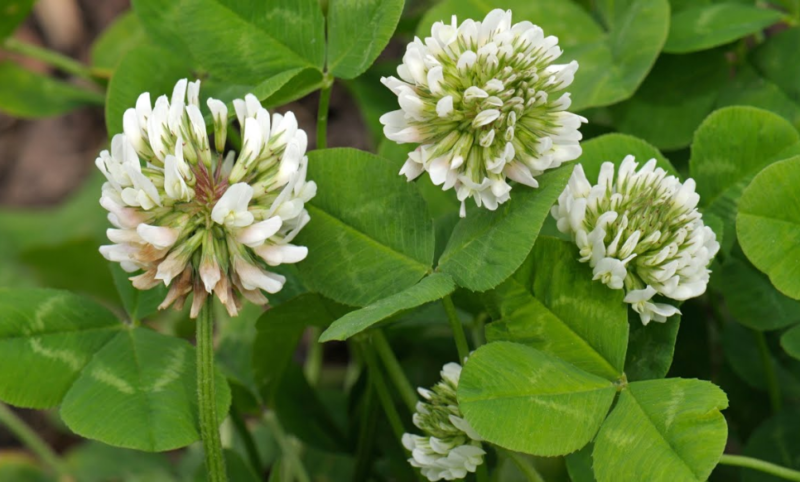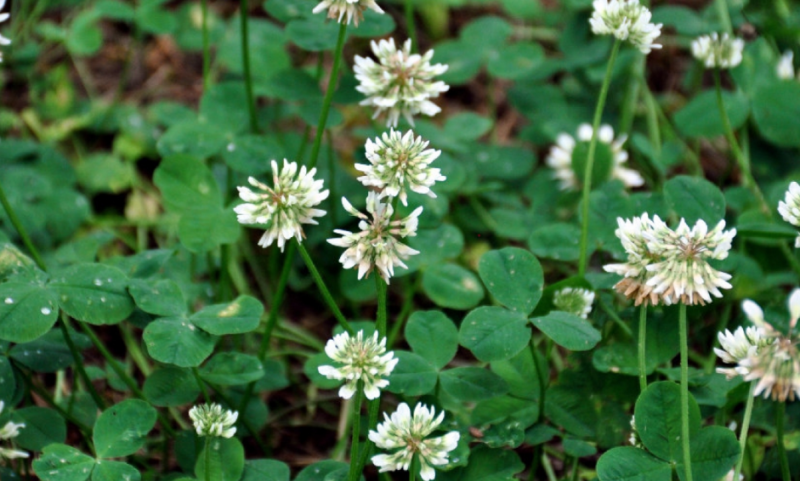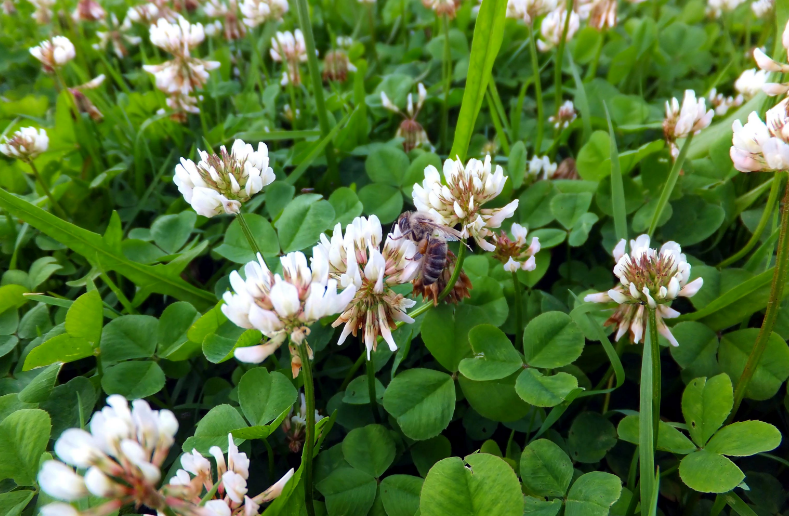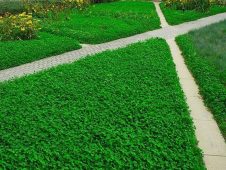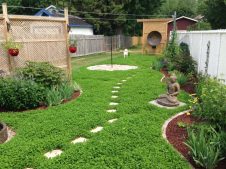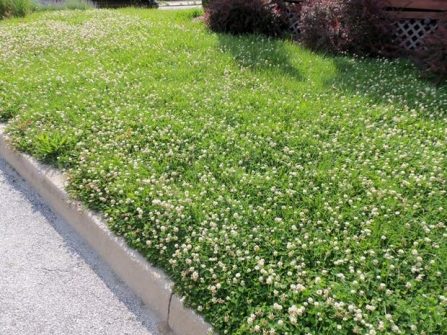Many are aware of the excellent properties of clover. This is a hearty feed for dairy cows, and decoration of lawns, and a natural medicine. One of the varieties of clover - white creeping has been successfully used for many years in agriculture and not only.
Material Content:
Botanical Description
White creeping clover is a perennial plant with rather long stems and branched roots.
- The length of the stems of the plant ranges from 20 to 50 cm. They are branched when they grow, crawl and creep on the ground, towering 10 - 12 cm above it.
- The plant has a complex root system, which includes the main rhizome and small processes. The first can go to the ground to a depth of a meter, and small roots - 30 - 40 cm.
- The leaves are bright green in color, composed of three elements interconnected. Each part of the leaf is similar in shape to an egg. The leaves have long petioles with which they are attached to the stem.
- Clover blooms from the last spring month until the end of September. The flowers are painted white, a light pink hue is possible. After flowering, fruits are formed in the form of elongated beans.
For clover propagation, use the seed (sowing seeds in the ground) or vegetative (using parts of the plant) method.
Varieties and varieties for lawn
White clover has long been used as an ornamental plant. On a green lawn, snow-white large clover flowers look especially impressive. Special varieties of this plant have been developed, designed specifically for decorative use.
White clover is able to grow in almost any climate and on any soil.
For example, the variety "Rivendel." Holland is its homeland, but the variety has long taken root in Russia and is successfully grown in industrial quantities. The plant is distributed in the European part of Russia, in Siberia, the Caucasus, the Kamchatka Peninsula and in the Far Eastern regions.
Its white flowers can be seen on meadows, riverbanks, lakes, in areas intended for grazing, in yards, in gardens - in a word, anywhere.
This variety can grow on any soil, loves light and moisture, tolerates frosts well. It grows quickly after trampling, so it is very convenient for use on lawns. The variety is an excellent honey plant. From a hectare of area, bees are able to collect up to one hundred kilograms of honey.
The described clover variety has many advantages:
- Rapid germination against the background of a small stalk growth rate in length.
- The ability to form a beautiful flowering lawn at a low cost.
- The ability to quickly recover after trampling and other damage.
- Unpretentiousness - the variety grows even on depleted soils.
- Possibility of use as siderate. The culture accumulates nitrogen in the root system and thus fertilizes the soil itself.
- Good compatibility with other herbs.
The Pipoline variety is also called microclover for the corresponding size of flowers and stem height. Outwardly, it looks like a regular clover. It has good resistance to mowing and trampling. It is used both independently and in lawn mixtures.
Another popular variety is Nanook. An unpretentious plant with snow-white flowers will become an adornment of any lawn. Due to its high endurance and stress resistance, it can be planted everywhere. The plant does not need frequent mowing, which greatly simplifies lawn care.
Features of growing plants
White clover, in principle, is unpretentious and does not require special care. But nevertheless, he also imposes certain requirements on the owners, which are recommended to be taken into account when growing them.
Clover is a light lover, so you need to plant it on lawns located in areas open to the sun.
Planting clover in open ground should be made from the last month of spring to September, inclusive.
Clover grows well on any soil, just does not like places where moisture is.
How to plant Dutch clover
Dutch clover is one of the most common varieties of this plant, on the basis of which many varieties are bred.
Clover should be planted at a temperature not lower than 10 ° C. You can do this from the beginning of May until the end of September.
In order for the clover lawn to look even and neat, you need to follow a few simple landing rules:
- If, shortly before the sowing time, there was no rain and the soil was dry, then it should be well watered in a day.
- Seeds need to be deepened into the ground by 1 - 2 centimeters.
- After sowing, you need to trample the soil so that the seeds of white clover sprout evenly.
Outdoor Care
Clover - a plant unpretentious, so it is very easy to care for it. It is enough just to mow the lawns in time with the help of a trimmer. As for irrigation, clover, in principle, has a good enough rainfall. If the weather is very arid, you can lightly water the plant so that the greens are bright and juicy.
Clover has an amazing ability to independently produce nitrogen from the roots. Due to this property, you can significantly save on the purchase of various dressings.
Harvesting plants and use in traditional medicine
Harvesting clover for the manufacture of medicines is a very responsible matter. For treatment use all the terrestrial parts of the plant: leaves, stems and flowers.
- After collection, the material is carefully checked for damage, insects, slugs, etc.
- All rotten, eaten by insects, diseased elements must be discarded.
- Pure flowers, leaves and stems are laid out on a baking sheet or large wooden board and dried. You can dry either in a room in which there is access to freely circulating air, or in the open air. In the latter case, place the baking sheet or shield so that direct sunlight does not fall on it.
In folk medicine, creeping white clover is used as a laxative, antipyretic, and analgesic. With its help, inflammation is perfectly removed, toxins are eliminated and the general tone of the body rises.
Clovers are used in the form of tinctures and decoctions, which can be made both from fresh and from dried flowers and leaves.
Benefit and harm for the garden
Clover can be seen in almost every garden. Its powerful roots provide the plant with the opportunity to occupy any territory. Due to the fact that clover displaces cultivated plants, most gardeners tend to remove it by all means. But do not be so categorical.
Clover is an excellent natural fertilizer for the soil. Experienced owners recommend using it as a green manure, planting in areas between plantings of fruit crops. Clover enriches the soil with beneficial substances.
Use in landscape design
The ability of clover to recover quickly after trampling makes it an indispensable decoration of the lawn intended for children's games.
Bright greens with white flowers will look good in large areas. Therefore, if the cottage has a lot of free space, you can safely occupy it with a carpet of clover.
The plant also looks good in the garden, but not in too shaded areas.
But what is not recommended to do is to plant clover next to plants that have weak roots. After all, he simply will not allow them to develop.
Creeping white clover is an excellent tool for creating a beautiful, easy-to-care and hardy lawn.


